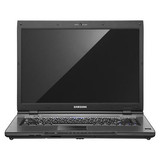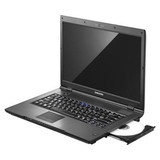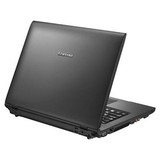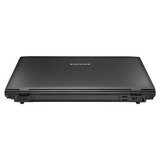Samsung P560-54G
Specifications
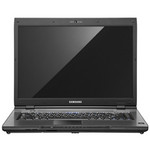
Price comparison
Average of 2 scores (from 2 reviews)
Reviews for the Samsung P560-54G
Source: PC Mag
 Archive.org version
Archive.org versionThe Samsung P560-54G ($1,150 street) gives you just about everything you need in a general-purpose laptop except a desirable design. A big 15.4-inch widescreen, an HDMI port, and a midrange Nvidia 3D chipset are praiseworthy, but this machine is a hard sell when the competition is offering similar features for less money. The Samsung P560-54G doesn't skimp on parts, but a sad-looking design and a bloated price tag are huge knocks against it.
2.5 von 5, Leistung gut, Display gut, Mobilität mäßig, Preis schlecht
Single Review, online available, Long, Date: 01/30/2009
Rating: Total score: 50% price: 40% performance: 80% display: 80% mobility: 60%
Source: Laptop Mag
 Archive.org version
Archive.org versionIf 3D abilities are important to you, the $1,299 Samsung P560-54G may be worth a look. Of course, you can configure other makers’ business portables with discrete graphics and get similar performance for a similar price, along with a little more style. Small-business users could get a better deal with the Dell Vostro 1510, or the XPS M1530 if they need a little more muscle. As the new kid on the block, Samsung had to give buyers a reason to jump ship; we can’t say this first effort does so.
3 von 5, Leistung sehr gut, Display mäßig, Emissionen gut
Single Review, online available, Long, Date: 12/11/2008
Rating: Total score: 60% performance: 90% display: 60% emissions: 80%
Comment
NVIDIA GeForce 9600M GS: Slower clocked 9600M GT and therefore a bit slower and cooler. In conjunction with an 9100M the 9600M GS is able to use HybridPower to save current.
Only some 3D games with very low demands are playable with these cards.
» Further information can be found in our Comparison of Mobile Graphics Cards and the corresponding Benchmark List.
Intel Core 2 Duo: This is the Core Duo and Core Solo successor with a longer pipeline and 5-20% more speed without more power consumption. As an addition to the Core Duo design there exists a fourth decoder, an amplified SSE-unit and an additional arithmetical logical unit (ALU).
The Core 2 Duo for laptops is identical to the desktop Core 2 Duo processors but the notebook-processors work with lower voltages (0.95 to 1188 Volt) and a lower Frontside bus clock (1066 vs 667 MHz). The performance of equally clocked notebooks is 20-25% lower than Desktop PCs because of the lower Frontside bus clock and the slower hard disks.
T5800: Entry level dual core processor based on the Merom core without Virtualization support and a low maximum temperature.» Further information can be found in our Comparison of Mobile Processsors.












